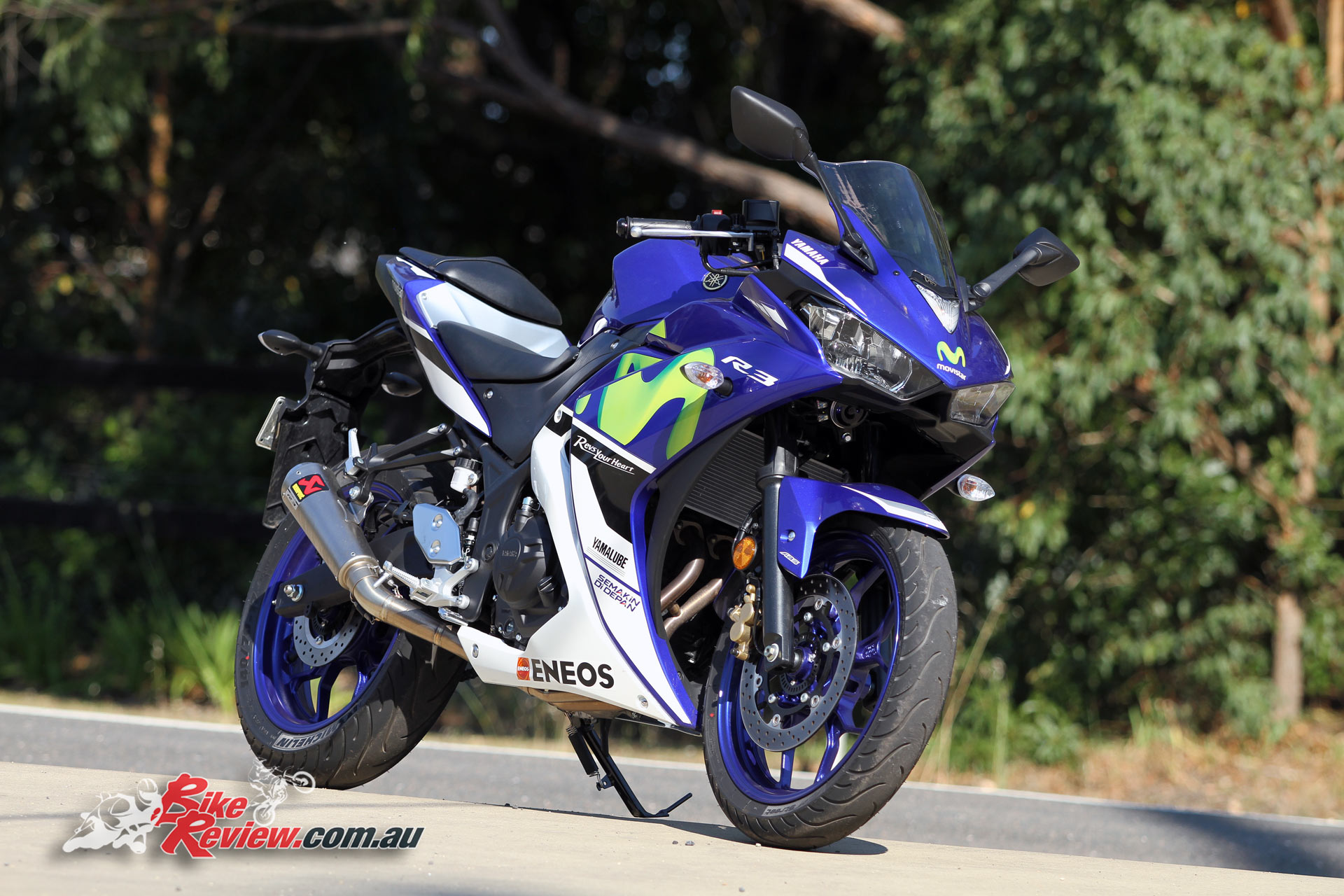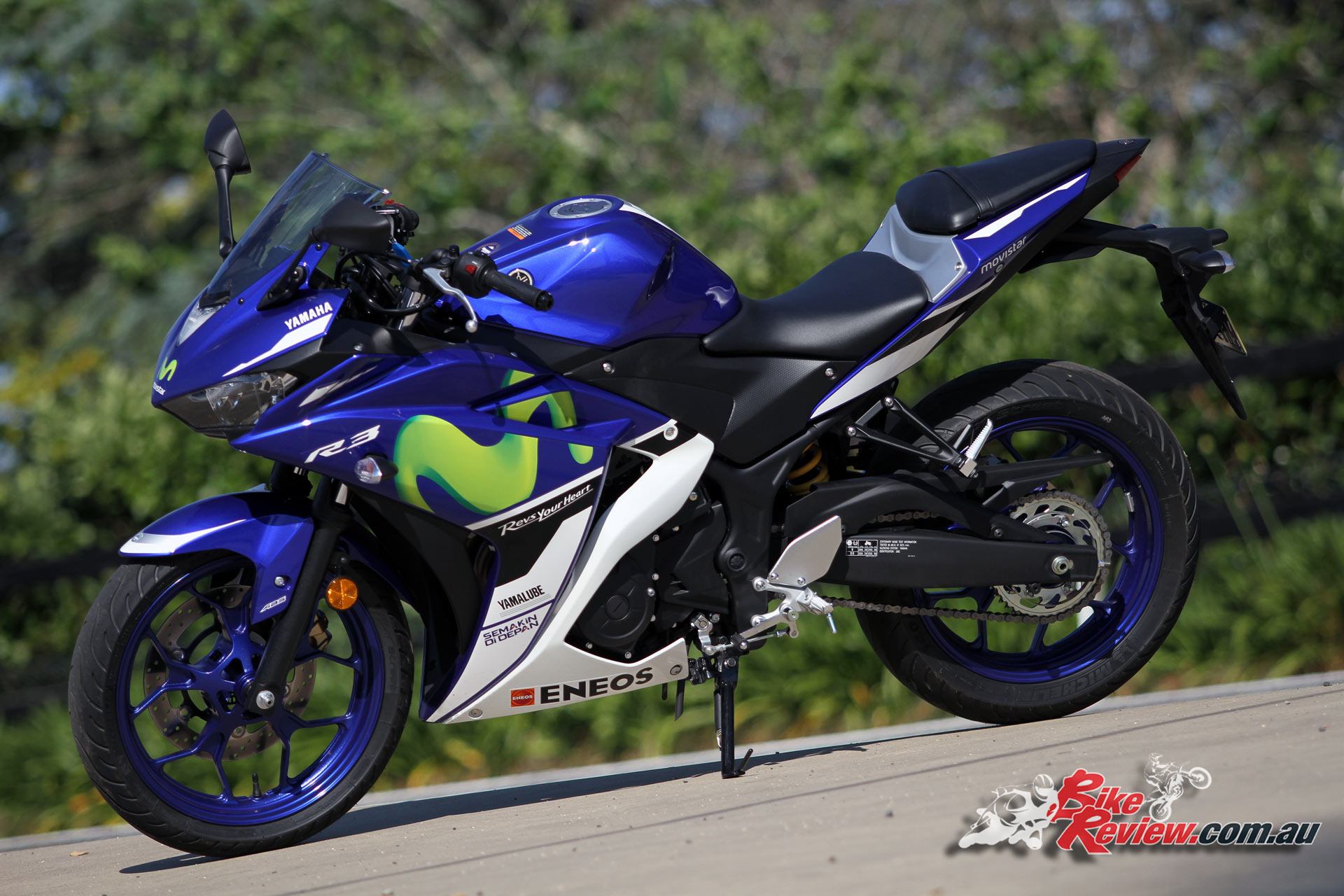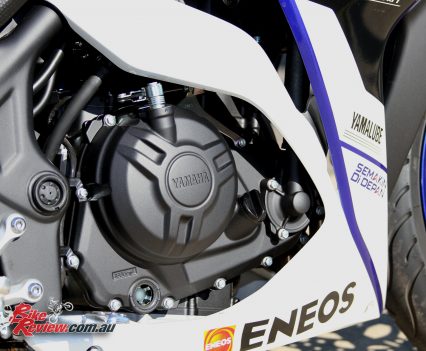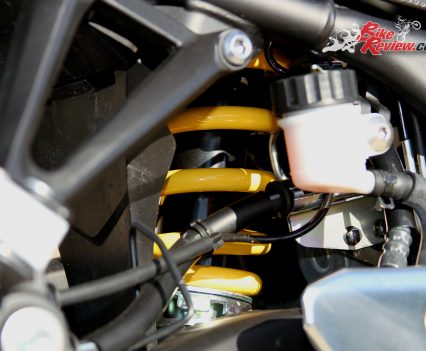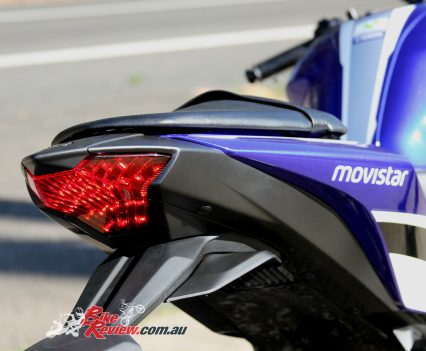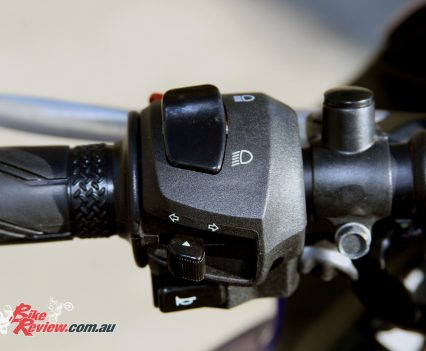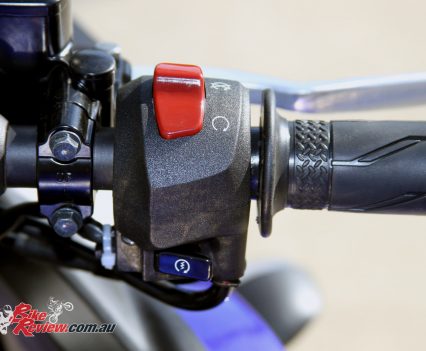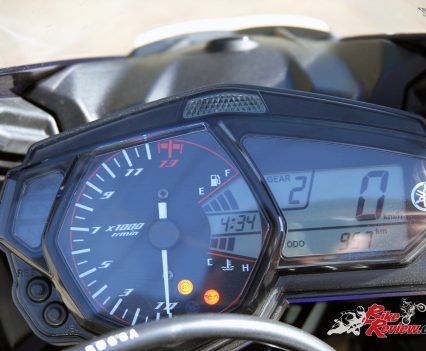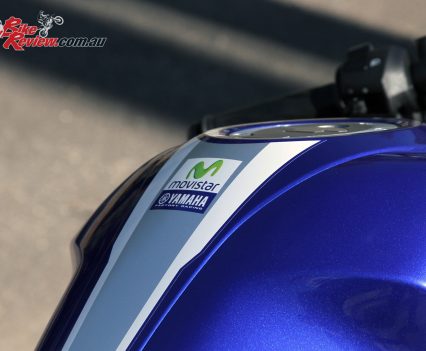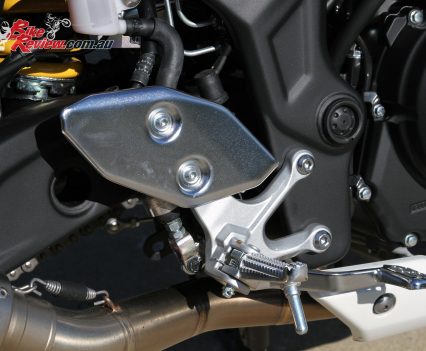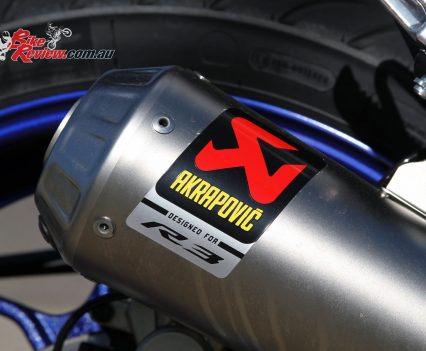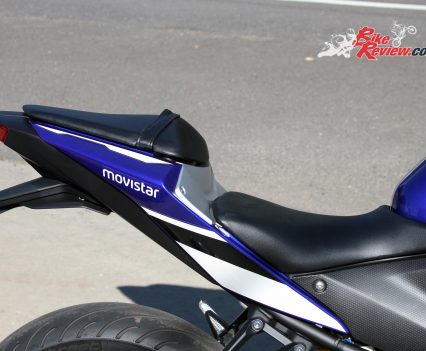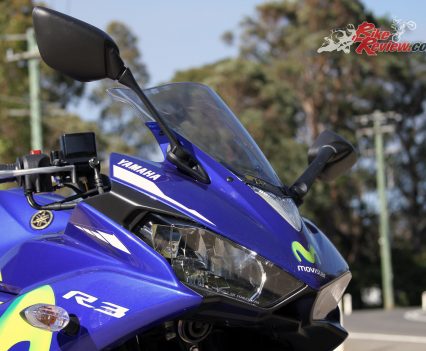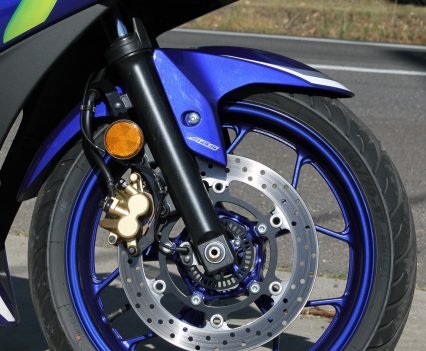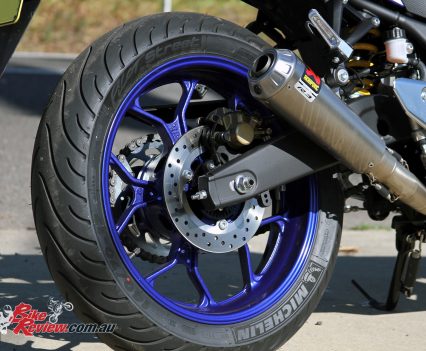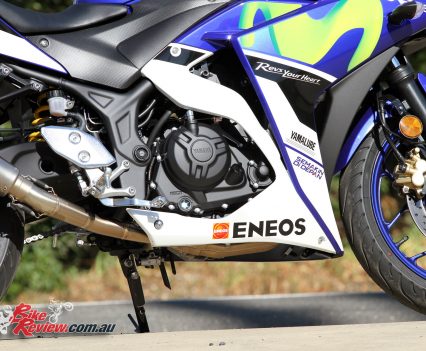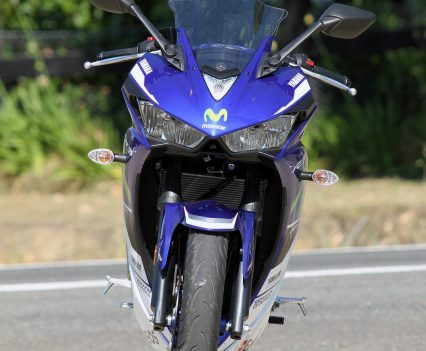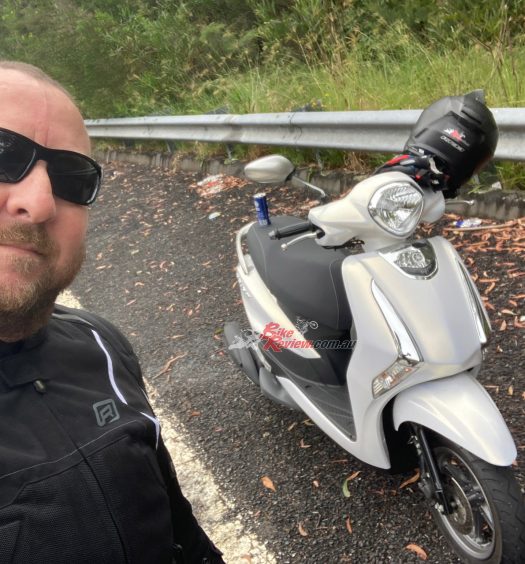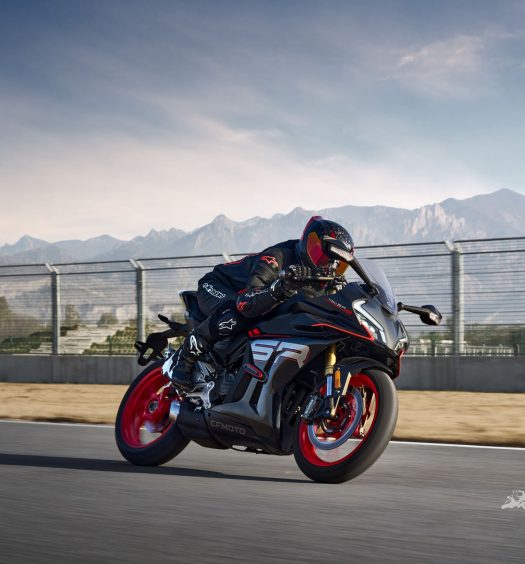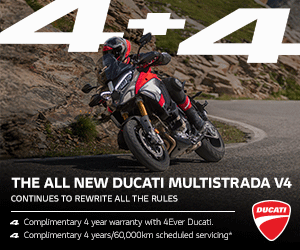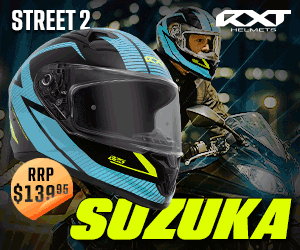Review: 2016 Yamaha YZF-R3 Movistar MotoGP Replica
Here is our review of the stunning Yamaha R3 Movistar Replica. Test: Simon Harris Photography: Kris Hodgson
It doesn’t matter what bike you buy these days, it will be extraordinarily uncommon to buy a “bad” one. The Yamaha YZF-R3 is no exception to this rule at all. In fact, it is really a great little bike that belies its modest capacity in terms of its manners, performance and personality.
As a LAMS approved machine, it really represents a trend for value, performance and all-round rideability that is to be commended. After a couple of weeks hooting around on the factory GP bike decaled model, I must say that I was very impressed in many ways.

The Movistar MotoGP Replica is a limited edition and our press bike was fitted with an Akrapovic exhaust, which had a nice not. Stunning looking bike from any angle.
The R3 embodies many elements from its bigger brother R6 and R1. The styling cues are obvious in the overall angular shape and profile and dual headlights, which represents aesthetic lineages. Parallel to this is the basic engine characteristics of general flexibility, topped with a raucous and rapacious top end. Be in no doubt that the R3 experience is a real taster for the bigger models, except them being more on steroids and crack than straight unleaded.
In terms of having a more gentle nature designed to appeal to more novice riders, the R3 321cc DOHC 8-valve parallel twin is a lovely little motor that is enhanced by faultless fuel injection and throttle action. To elaborate, it seems to matter not what revs the engine is doing or the gear you are currently in, when you pull on the throttle, the tiny motor drives without hesitation, without chugging, without snatch, without any hesitation.
I found this really exciting and an excellent element to the overall package and the intended rider demographic. The throttle action is testimony to Yamaha’s continued dedication to this end – predictability and assurance of engine response. I went so far as to navigate very slow roundabouts in stupidly high gears with my daughter on the back and the little machine did not say boo. That’s care.
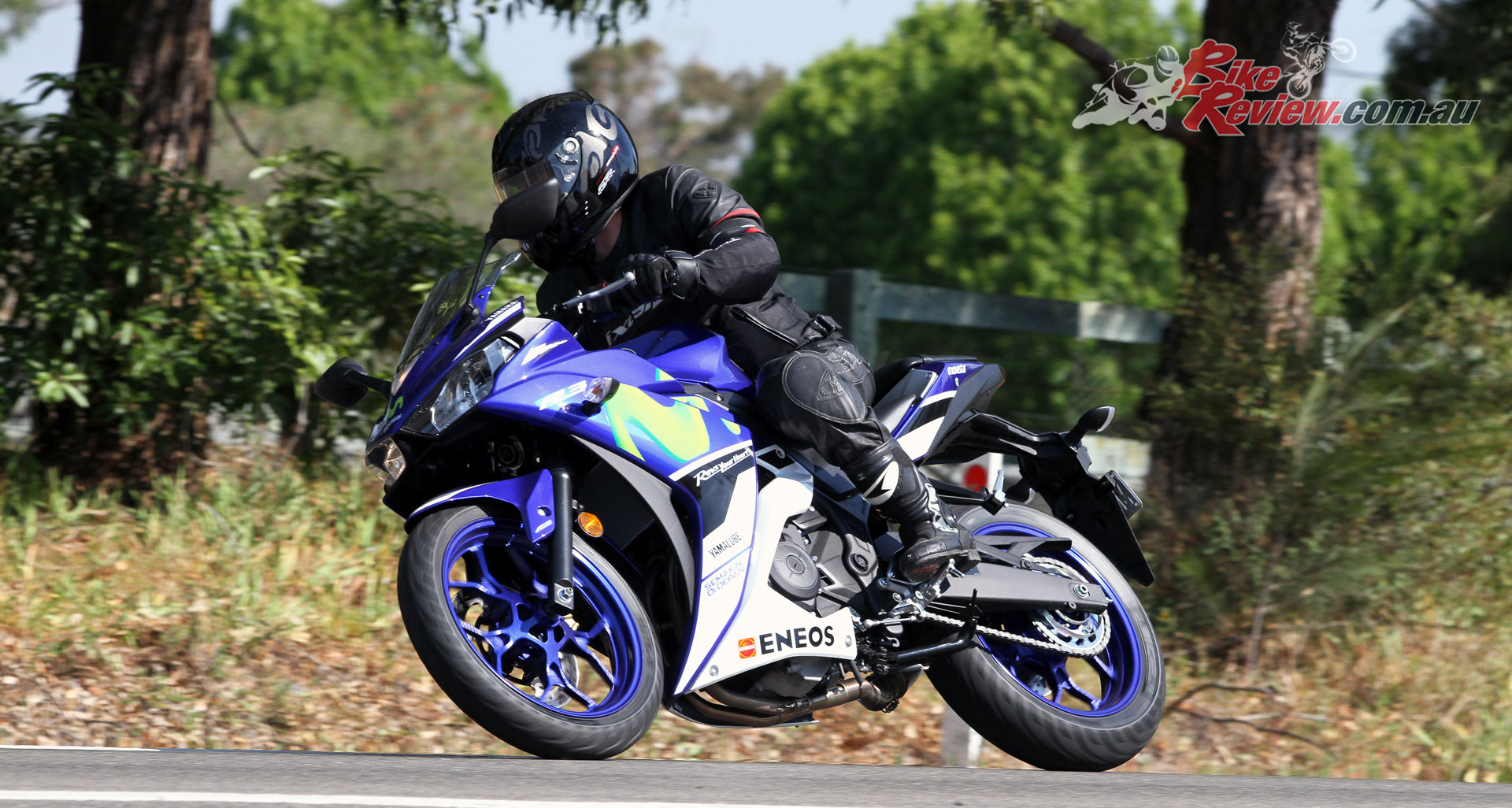
Simon was impressed with the little R3, particularly the linear and glitch free power delivery throughout the rev range. he also had a blast on his favourite winding roads.
Without a pillion and nary a care, wind up the R3 to the vertical end of the tacho [thank God it is analogue] to experience that area in engine performance where the ponies and the newtons cross and the zinger of an engine is in its nirvana. The top end from about 9.5 to redline is quite frenetic in that the screaming engine knows nothing but to scream higher and longer and to pull as though it were the last time.
Honestly, you could get yourself into some serious trouble on this banging up your favourite tight stretch, in terms of the law, and also perhaps seriously disturb others on bikes with three times the blow on similar stretches. One must not fail to mention the growl this little howler generates on over-run – it is a fabulous noise that seems to emanate from a motor of much larger capacity, and coupled with the crack and pop from the bespoke R3-specific designed Akrapovic…noise can be safety; I think you know what I mean.
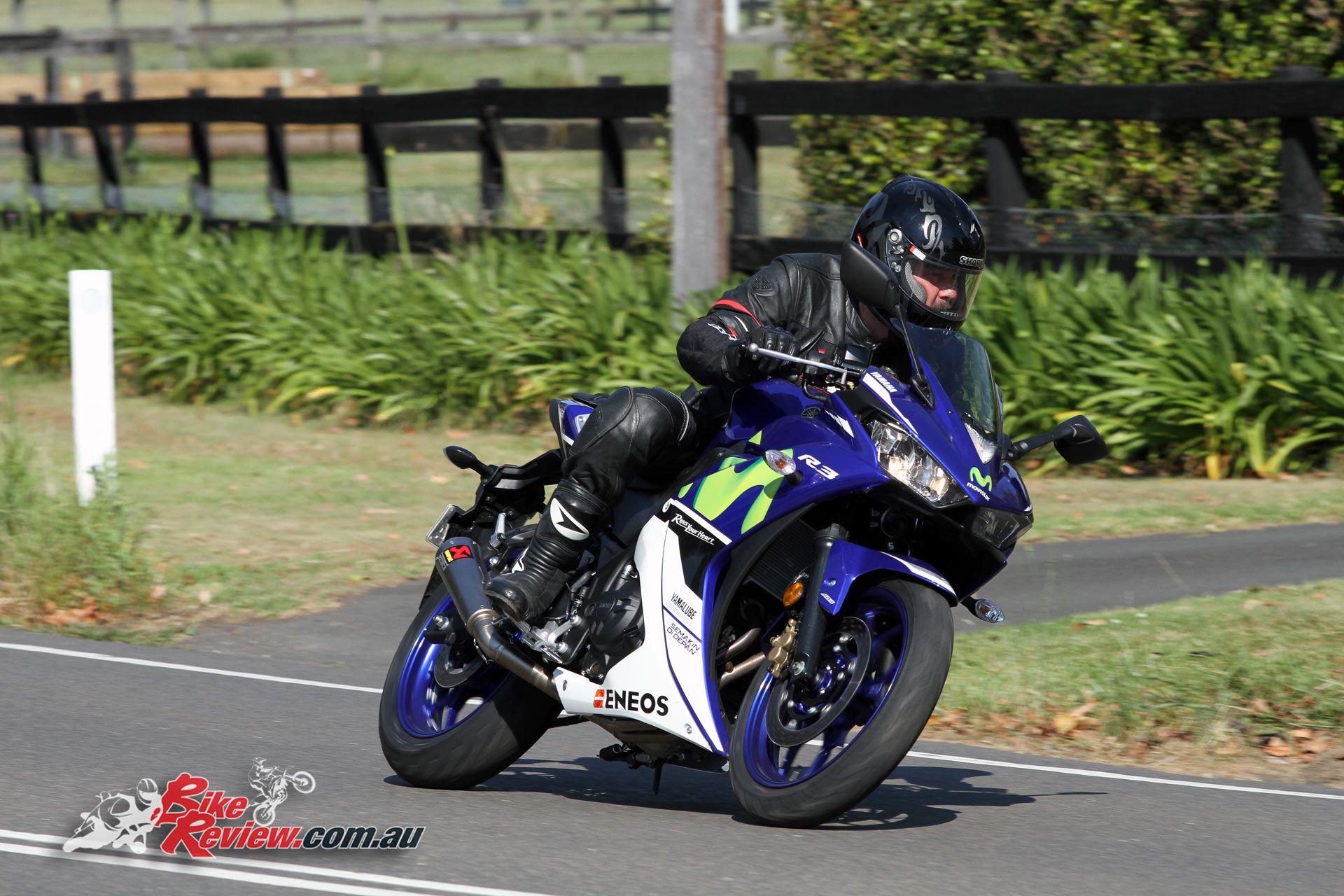
The basic suspension package coped in all bar really bumpy situations and the only real area holding the bike back in handling terms was the OEM rear tyre profile and edge grip.
Enveloping the wheels to suspension to engine bits is a decent steel chassis that applies a swingarm to wheelbase ratio from a previous R1 model. I really don’t know the significance of this in detail, but if it has to do with the nimble changes of direction and general balance and feel of the R3, then it must be a good thing. As long as your roads are relatively smooth, the R3 will beckon you to up the ante, however, on more bovine thoroughfares you need to be aware that the very light weight and mostly non-adjustable suspension does have its limits.
Forgetting the really rough stuff, you and an R3 can get along just fine – it’s light, comfortable [even though it gives the impression of boy racer, it is well architectured ergonomically], nimble and generally very easy to get along with from slow urban speeds to rapid tollway speeds.
The suspension is somewhat limited in terms of customisation, but really is quite adequate for a one-fit for all solution. The forks are unfashionably non-USD, but do a decent job of keeping the front end centred and true. I feel that the front brake could be better – it does have ABS, which is a terrific inclusion, but really lacks any truly discernible feel from the single disc and rather anachronistic two-pot caliper and non-adjustable master cylinder setup. I guess cost is the deciding factor here.
The back end is supported by a single preload adjustable spring-damper unit that, for my weight and ability, proved to be up to the task in terms of controlling the movement of mass over relatively decent surfaces. It’s generally supple nature absorbs most shocks, but of course, this is to a point. If you are rider that is exceptionally light or heavy then some changes to the stock set-up may be required.
The general trait for switching direction is easy though, with the central CoG just that – the engine is positioned well back from the front, practically right under your bum, to assist in making turning as simple as a shift in body attitude or a slight pull on the ‘bars.
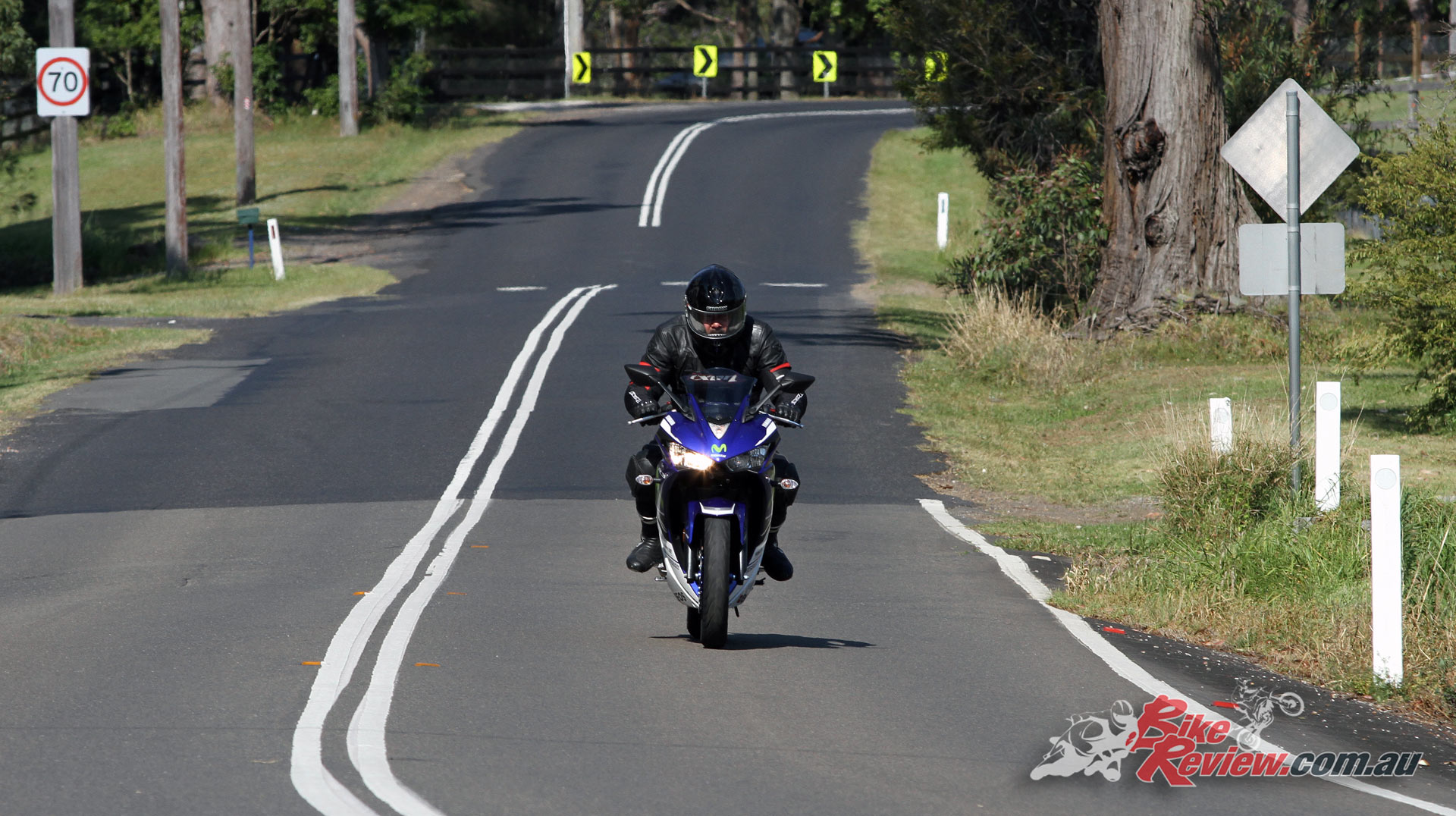
Cruising, commuting or weekend blasting can all be enjoyed by the learner rider on the R3. Those who want to get more serious could upgrade suspension and tyres, along with brake pads and lines and enjoy track days as well.
The ground clearance is very good, although I did feel a bit hampered by the rear tyre profile – the 140/70 section hoop felt as though it had a “pivot” towards the end of the radius, making hitting maximum lean a bit of a shemozzle for me. Other than that, plus a few “squirrely” moments existing roundabouts, the package feels sound and useable and has a good feel for traction at both ends of the bike. A different rear tyre package may make the difference in removing any doubt when leaned over.
All in all, the YZF-R3 is a fantastic entrée into the world of sports motorcycles, particularly Yammies. It has great sporting appeal in terms of performance delivery from the engine, a well-balanced chassis and good overall ergonomics and ancillary equipment, such as a competent dash, decent lights, indicators and mirrors etc. The added nicety of the well-stickered Team Movistar Yamaha livery is a bonus statement of prowess. The YZF-R3 is a thoroughly suitable gateway addiction to perhaps bigger and faster things such as an R6 and R1.
2016 Yamaha YZF-R3 Specifications
Price: $6399 + ORC
Warranty: Two years/unlimited kilometre
Colours: Red, Blue, Black
Claimed power: 30.9kW [42hp]@10750rpm
Claimed torque: 29.6Nm [21.8ft-lbs]@9000rpm
Wet weight: 169kg
Fuel capacity: 14L
Engine: Liquid-cooled, DOHC, inline twin-cylinder, eight-valve four stroke, 68 x 44.1mm bore x stroke, 321cc, 11.2:1 compression, TCI ignition,
Gearbox: Six speed, constant mesh
Clutch: Wet multi-disc
Final drive: Chain
Chassis: Steel diamond-type tubular frame, long steel asymmetric swingarm, Rake: 25°, Trail: 95mm
Suspension: 41mm KYB forks, 130mm travel, Monocross shock, preload adjustable, 125mm travel
Brakes: ABS, single 298mm floating rotor, two-piston caliper, single 220mm rear rotor, single-piston caliper
Wheels & Tyres: Cast aluminium 10-spoke, Michelin Pilot Street, 110/70 – 17, 140/70 – 17,
DIMENSIONS:
Wheelbase: 1380mm
Ground clearance: 160mm
Seat height: 780mm
Overall height: 1135mm
Overall length: 2090mm
Overall width: 720mm
Instruments: Analogue tachometer, digital display, gear indicator, shift light, oil change light




